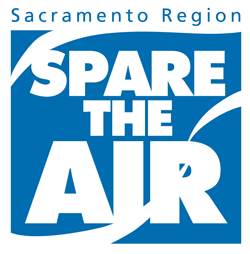
Overall Health Effects
- Aggravated cardiovascular and respiratory illness
- Added stress to heart and lungs, which must work harder to supply the body with oxygen
- Damaged cells in the respiratory system
- Accelerated aging of the lungs
- Loss of lung capacity and decreased lung function
- Development of diseases such as asthma, bronchitis, emphysema, and possibly cancer
- Shortened life span
- Individuals with heart disease, coronary artery disease or congestive heart failure
- Individuals with lung diseases such as asthma, emphysema or chronic obstructive pulmonary disease (COPD)
- Pregnant women
- Outdoor workers
- Older adults and the elderly
- Children under age 14
- Athletes who exercise vigorously outdoors
Health Effects from Specific Pollutants
Ground-level ozone is formed when volatile organic compounds (VOCs) and oxides of nitrogen (NOx) react with the sun's ultraviolet rays. The primary source of VOCs and NOx is mobile sources, including cars, trucks, buses, construction equipment and agricultural equipment.
Ground-level ozone reaches its highest level during the afternoon and early evening hours. High levels occur most often during the summer months. It is a strong irritant that can cause constriction of the airways, forcing the respiratory system to work harder in order to provide oxygen.
It can also cause other health problems including:
- Aggravated respiratory disease such as emphysema, bronchitis and asthma
- Lung damage, even after symptoms such as coughing or a sore throat disappear
- Wheezing, chest pain, dry throat, headache or nausea
- Reduced resistance to infections
- Increased fatigue
- Weakened athletic performance
Particulate Matter (PM) and Wildfire Smoke
Particulate Matter is a complex mixture that may contain soot, smoke, metals, nitrates, sulfates, dust, water and tire rubber. It can be directly emitted, as in smoke from a fire, or it can form in the atmosphere from reactions of gases such as nitrogen oxides.
The size of particles is directly linked to their potential for causing health problems. Small particles (known as PM2.5 or fine particulate matter) pose the greatest problems because they bypass the body’s natural defenses and can get deep into your lungs and potentially your bloodstream. Exposure to such particles can affect both your lungs and your heart.
Long-term exposure to particulate pollution can result in significant health problems including:
- Increased respiratory symptoms, such as irritation of the airways, coughing or difficulty breathing
- Decreased lung function
- Aggravated asthma
- Development of chronic respiratory disease in children
- Development of chronic bronchitis or chronic obstructive lung disease
- Irregular heartbeat
- Nonfatal heart attacks
- Premature death in people with heart or lung disease, including death from lung cancer
-
Tips For Children (.pdf)
Spanish | Russian | Hmong -
Tips For Seniors (.pdf)
Spanish | Russian | Hmong -
Tips For Residents (.pdf)
Spanish | Russian | Hmong
Short-term exposure to particulate pollution can:
- Aggravate lung disease causing asthma attacks and acute bronchitis
- Increase susceptibility to respiratory infections
- Cause heart attacks and arrhythmias in people with heart disease
- Irritation of the eyes, nose and throat
- Coughing
- Chest tightness
- Shortness of breath




